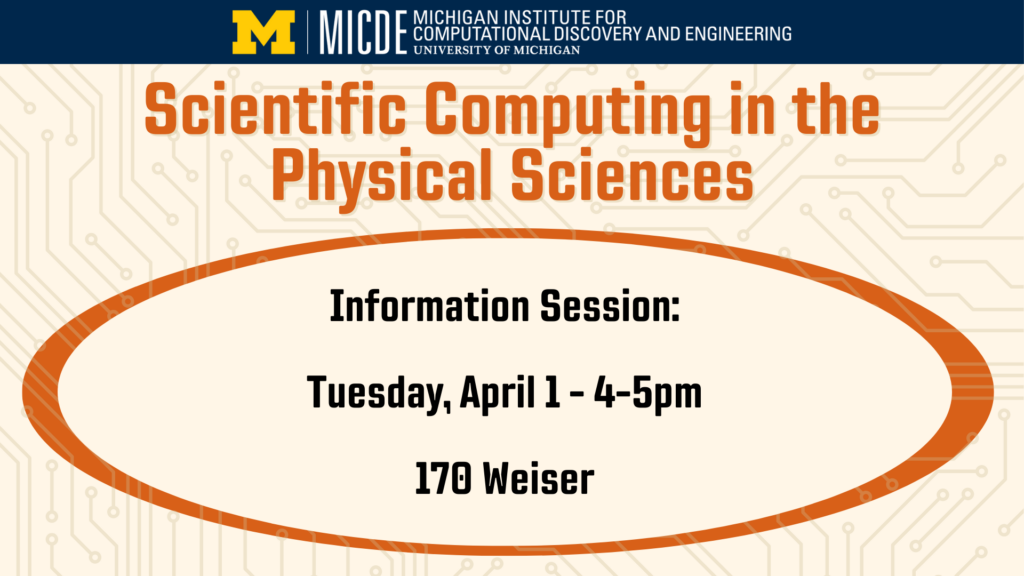Events

- This event has passed.
MICDE/ MCAIM seminar: Boyce Griffith, Professor at the University of North Carolina
April 12, 2024 @ 3:00 pm - 4:00 pm
Venue: East Hall – 1084

Bio: Boyce Griffith is a Professor in the Department of Mathematics and Department of Biomedical Engineering at the University of North Carolina, where he is also an Adjunct Professor of Applied Physical Sciences and Associate Chair for Research in the Department of Mathematics. His research group focuses on the development and application of numerical methods for simulating fluid-structure interaction with a particular focus on models of the heart and its valves. Their core approach is based on extensions of the immersed boundary method fluid-structure interaction.
Immersed methods for fluid-structure interaction
The immersed boundary (IB) method is a framework for modeling systems in which an elastic structure interacts with a viscous incompressible fluid. The fundamental feature of the IB approach to such fluid-structure interaction (FSI) problems is its combination of an Eulerian formulation of the momentum equation and incompressibility constraint with a Lagrangian description of the structural deformations and resultant forces. In conventional IB methods, Eulerian and Lagrangian variables are linked through integral equations with Dirac delta function kernels, and these singular kernels are replaced by regularized delta functions when the equations are discretized for computer simulation. This talk will focus on three related extensions of the IB method. I first detail an IB approach to structural models that use the framework of large-deformation nonlinear elasticity. I will focus on efficient numerical methods that enable finite element structural models in large-scale simulations, with examples focusing on models of the heart and its valves. Next, I will describe an extension of the IB framework to simulate soft material failure using peridynamics, which is a nonlocal structural mechanics formulation. Numerical examples demonstrate constitutive correspondence with classical mechanics for non-failure cases along with essentially grid-independent predictions of fluid-driven soft material failure. Finally, I will introduce a reformulation of the IB large-deformation elasticity framework that enables accurate and efficient fluid-structure coupling through a version of the immersed interface method, which is a sharp-interface IB-type method. Computational examples demonstrate the ability of this methodology to simulate a broad range of fluid-structure mass density ratios without suffering from artificial added mass instabilities, and to facilitate subgrid contact models. I will also present biomedical applications of the methodology, including models of clot capture by inferior vena cava filters.
The MICDE Winter 2024 Seminar Series is open to all. University of Michigan faculty and students interested in predicting and explaining the properties of materials using computer simulation are encouraged to attend.
This seminar is cohosted by the Michigan Institute for Computational Discovery & Engineering (MICDE), the Department of Mathematics and the Michigan Center for Applied and Interdisciplinary Mathematics (AIM).
This is an in-person event.
Graduate Certificate in Computational Discovery and Engineering, and MICDE fellows, please use this form to record your attendance.


